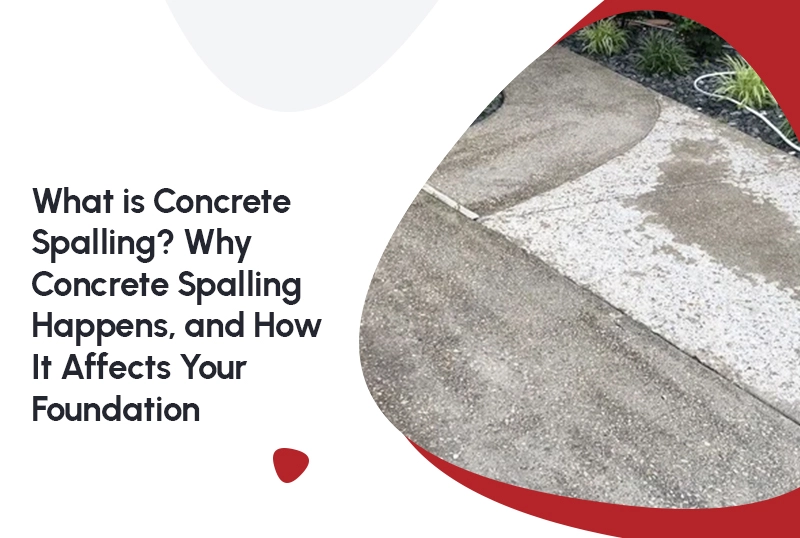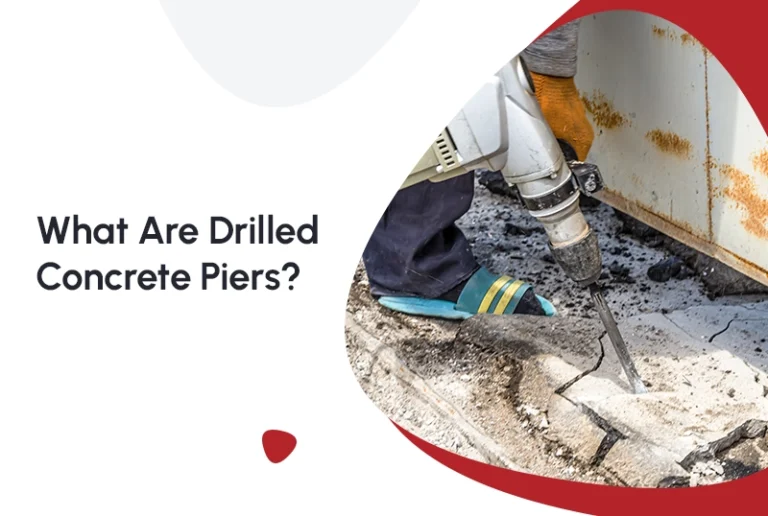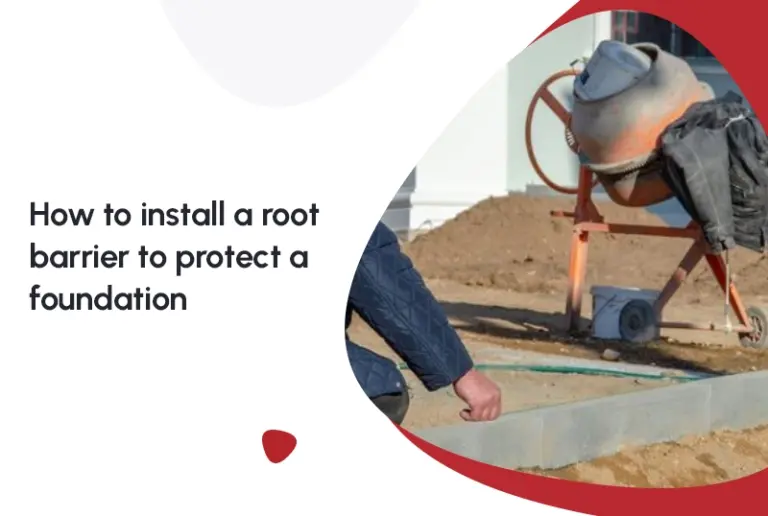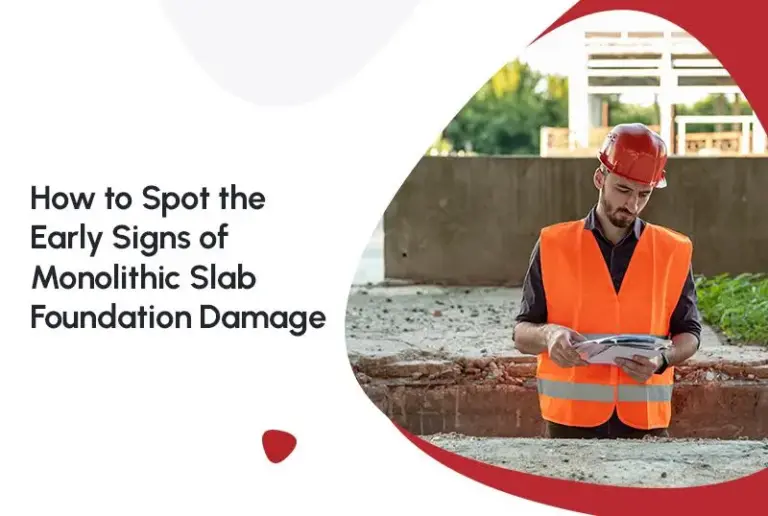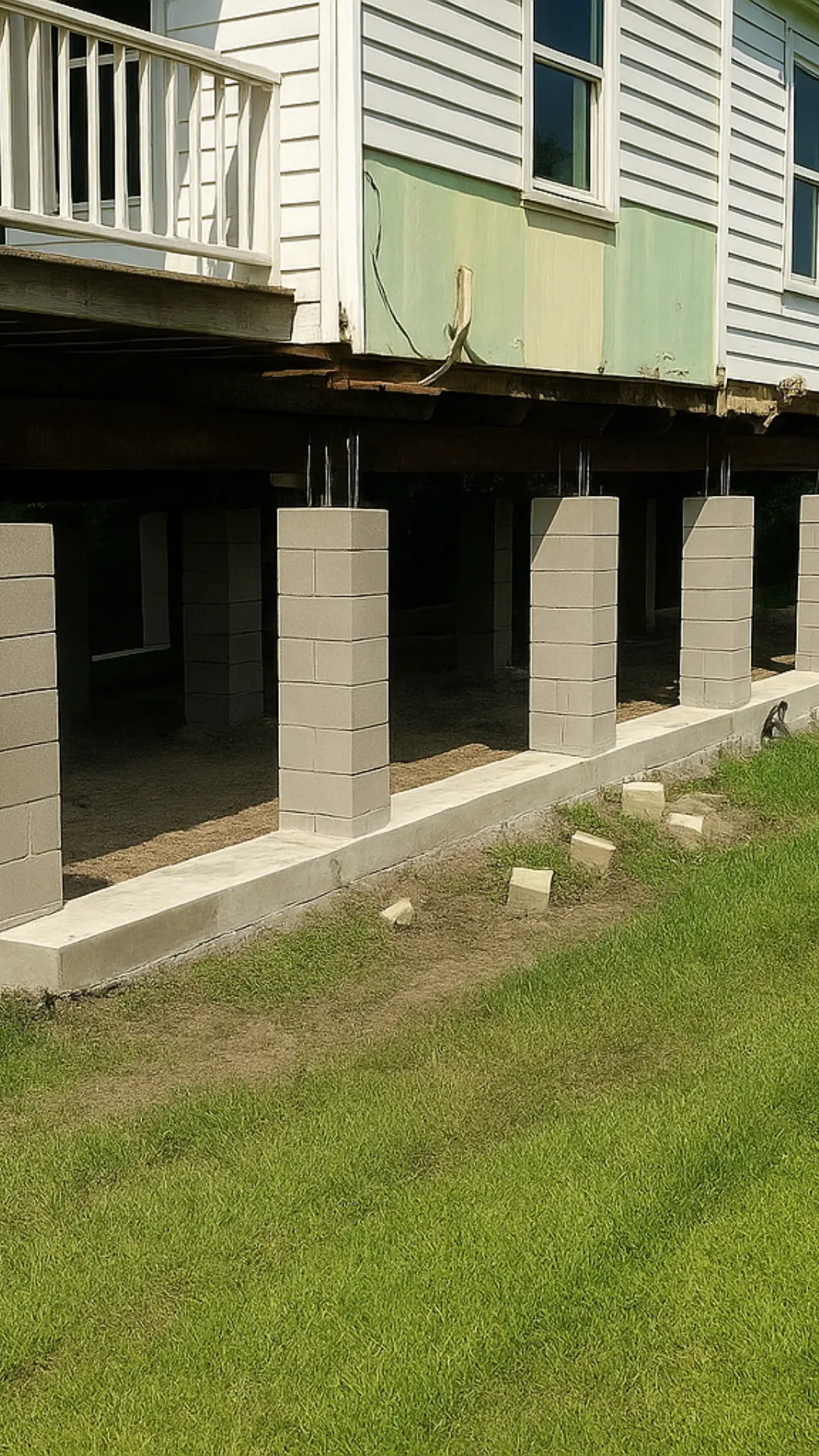Concrete spalling is a common problem for homeowners, especially those with foundations exposed to harsh environmental conditions. Whether you’re noticing peeling, cracking, or flaking concrete on your cement foundation. We’ll dive deep into the causes of concrete spalling, how it impacts your foundation, and the best ways to repair it, focusing on concrete slab foundation repair techniques.
What is Concrete Spalling?
Concrete spalling occurs when the surface of concrete begins to break apart, often flaking off in chunks, peeling, or developing visible cracks. Though it often begins at the surface, it may progress into deeper layers if not addressed. While often seen on driveways, sidewalks or patios, spalling on a foundation is a serious red flag. The weakened surface allows moisture, air, and other deteriorating forces to attack the concrete’s core, leading to structural problems over time.
When it affects your home’s foundation, spalling isn’t just a cosmetic issue—it can indicate or trigger deep damage such as moisture infiltration, corrosion of reinforcing steel, and foundation shifting or settling.
Why Spalling Happens
Understanding why spalling occurs is key both to preventing it and repairing it effectively. Below are the main causes.
1. Moisture Infiltration
Water is the primary culprit behind many spalling cases. Concrete is porous, and when water enters cracks or pores and then freezes it expands, creating internal stress. Repeated freeze‑thaw cycles cause the surface to crack, flake, or peel.
Additionally, trapped moisture promotes corrosion of embedded steel (rebar) and weakens the concrete matrix.
In foundation structures, water that collects near or under the slab or walls can slowly degrade the concrete from the inside out, making spalling highly likely.
2. Corrosion of Reinforcement Steel
Many concrete foundations, including pier and beam foundations, contain steel reinforcement bars (rebar) to strengthen the structure. When moisture and air reach the steel, rust forms, and rust occupies more volume than the original metal. That expansion exerts pressure on the surrounding concrete, causing cracks or “jacking” off chunks of concrete (spalls).
Once the reinforcement begins to corrode, the spalling can accelerate dramatically because each crack gives access to more moisture and oxygen.
3. Poor Construction or Material Quality
Sub‑par concrete mixes, improper curing, or poor finishing techniques can lead to a weak surface layer that is more vulnerable to spalling. For example, if too much water is used, or finishing is done too soon, the surface will be less dense, more porous, and more susceptible.
Similarly, minimal cover over rebar (too shallow placement) makes corrosion more likely and spalling more rapid.
4. Environmental Factors
Harsh environmental conditions exacerbate spalling risk. Freeze‑thaw cycles, de‑icing salts, chemical exposure, and extreme temperature fluctuations all contribute. Water enters pores around salt, freezes, expands, or the salt dissolves and migrates, leaving voids and weak spots.
In climates with frequent freezing or heavy rainfall, foundations are especially vulnerable unless built or maintained with these conditions in mind.
5. Aging Concrete
Even high‑quality concrete deteriorates slowly over decades. Over time, carbonation (a process where carbon dioxide penetrates concrete and lowers alkalinity) reduces the protective environment for rebar, leading to corrosion and spalling.
Older foundations may not have been poured with modern standards, making them more prone to spalling.
How Concrete Spalling Affects Your Foundation
While it may initially appear to be a minor cosmetic issue, it can have significant effects on the structural integrity of your foundation and home. Here’s how spalling can impact your property:
1. Weakened Structural Integrity
As spalling progresses, deeper layers of concrete become exposed, reinforcing steel may be compromised, and the foundation’s ability to support the load of your home can diminish. When the foundation weakens, you might see uneven floors, cracked walls, or windows and doors that don’t close properly.
In short, what began as surface flaking can lead directly to structural problems if left unattended.
2. Water Infiltration
Spalling opens pathways for water to penetrate deeper into the foundation. That water can cause mold, mildew, rot (in beams or floors adjacent to the foundation), and rust of any embedded metals. It can also increase hydrostatic pressure behind the foundation, accelerating cracking or shifting.
This becomes a vicious cycle: spalling → more water ingress → more internal damage → more spalling.
3. Increased Repair Costs
If you don’t address concrete spalling early, it can worsen over time, leading to costly repairs. Not only will the visible cracks and chips need fixing, but the entire foundation may require stabilization. Ignoring the problem can lead to the need for major repairs, including foundation leveling, pier and beam replacement, or full foundation replacement.
4. Compromised Aesthetic Appeal
While the aesthetic impact of concrete spalling may seem secondary, it can affect the overall curb appeal of your home. Visible damage on your foundation, patio, or driveway can give your property a run-down appearance. This may be a concern if you plan to sell your home, as spalling can deter potential buyers or reduce the overall value of your property.
How to Repair it
Repairing concrete spalling requires addressing both the symptoms and the underlying causes. Here are the steps involved in fixing:
1. Identify the Cause
Before repairing the surface, determine what is driving the spalling. Is it water infiltration, freeze‑thaw damage, rebar corrosion, or installation flaws? A professional inspection helps ensure you don’t just patch symptoms but address the underlying issue.
2. Concrete Slab Foundation Repair
For foundations (or slabs) affected by spalling, typical repair steps include:
- Removing loose or damaged concrete to reach sound material and exposed steel if required.
- Cleaning and treating exposed reinforcing steel or replacing if necessary.
- Applying repair mortars or polymer‑modified concrete patch products designed for structural applications.
- Injecting epoxy or polyurethane into underlying cracks to seal and stabilize.
3. Pier and Beam Foundation Repair
If spalling has affected a pier and beam foundation, the repair will likely involve replacing or reinforcing the affected piers or beams. The damage from spalling could lead to instability, so it’s crucial to restore the structural integrity of the foundation before repairing the surface damage. Pier jacking or underpinning techniques may be used to stabilize the foundation.
4. Concrete Leveling
Once the foundation is stable, concrete leveling techniques can be employed to smooth out the surface and fill any holes left by spalling. This process helps restore the integrity and aesthetic appearance of the foundation, driveway, or patio.
Preventive Measures to Avoid Future Spalling
- Ensure proper drainage around the foundation: re‑grade soil, clear gutters, extend downspouts.
- Use water‑resistant coatings or sealers suitable for your climate and concrete exposure.
- Avoid or minimize use of de‑icing salts near concrete slabs or foundations.
- Choose air‑entrained concrete mixes in cold climates to help with freeze‑thaw durability.
- Maintain and inspect the condition of the crawl space or basement to ensure ventilation, low humidity, and no standing water.
Conclusion
Concrete spalling is more than just an unsightly issue, it’s a sign of potential structural problems that can affect the integrity of your cement foundation and home. Whether caused by moisture, corrosion, or poor construction, spalling can lead to severe damage if left unaddressed. However, with the right repair methods, such as foundation stabilization, reinforcing techniques, and concrete leveling, you can restore your foundation to its original strength and prevent future problems. Early intervention is key to minimizing the cost and impact of concrete spalling repairs.
FAQs
1. Why does concrete spalling occur?
Concrete spalling occurs when moisture, chemicals, or corrosion weaken the bond between the concrete surface and its inner layers. The most common cause is corrosion of embedded steel reinforcement, which expands as it rusts, creating internal pressure that causes the surface to flake or break away. Other contributing factors include freeze-thaw cycles, poor concrete mix design, improper curing, and exposure to de-icing salts. Over time, these stresses lead to visible cracking, pitting, and surface deterioration.
2. How do you prevent concrete spalling?
Preventing concrete spalling starts with using high-quality concrete mixes and ensuring proper curing. Always seal concrete surfaces to block moisture and protect them from freeze-thaw damage. Keep water from pooling around concrete slabs by maintaining good drainage, and use corrosion-resistant rebar in reinforced structures. Regular sealing every few years and avoiding harsh de-icing salts during winter can dramatically extend concrete lifespan and prevent spalling.
3. Does temperature affect concrete spalling?
Yes, temperature plays a major role in concrete spalling. During freeze-thaw cycles, trapped moisture inside the concrete expands as it freezes, creating pressure that forces the surface to crack and flake. In high-temperature environments, rapid heating can also cause surface layers to separate, especially in fire-exposed structures. Using proper curing techniques and applying protective sealants helps minimize temperature-related spalling damage.
4. How to stop spalling in concrete?
To stop spalling in concrete, first remove all loose, flaking material using a wire brush or grinder. Clean the surface thoroughly and repair damaged areas with a polymer-modified repair mortar or epoxy-based patch compound. Once repaired, apply a high-quality concrete sealer to prevent moisture penetration and protect against salt or chemical damage. Improving site drainage and maintaining even moisture levels around the slab will also help prevent future spalling.
5. What is the best product for repairing spalling concrete?
The best products for repairing spalling concrete are polymer-modified cement repair mortars and epoxy-based resurfacers. These materials bond strongly to existing concrete and provide resistance against water and chemicals. For deep spalling, a two-part epoxy patching compound works best, while for large surface areas, a self-leveling concrete resurfacer provides a smooth, uniform finish. Always follow manufacturer instructions for curing and sealing after application.
6. Can spalling concrete be repaired?
Yes, spalling concrete can be repaired effectively if addressed early. The process typically involves cleaning the damaged area, applying a bonding primer, and resurfacing it with a repair mortar. For reinforced concrete, the corroded steel rebar must be cleaned or replaced before patching. After the repair, applying a concrete sealer helps protect against moisture, salt, and future deterioration.
7. What is the process of spalling?
Spalling is a gradual process that begins when moisture penetrates the concrete surface. Over time, factors such as freezing, salt exposure, or corrosion of embedded steel cause the internal pressure to build, leading to cracking and flaking. Initially, small chips appear, but if untreated, larger chunks of concrete can detach. Regular maintenance and sealing can stop this process before it compromises the structure’s integrity.
8. What are the first signs of spalling?
The early signs of spalling include small flakes or pits on the concrete surface, discoloration, and fine cracks. You might also notice rust stains where rebar corrosion has started beneath the surface. In advanced stages, large pieces of concrete may start detaching, exposing the steel reinforcement underneath. Detecting these signs early and applying repair solutions promptly can prevent major damage.
9. What is the difference between concrete spalling and scaling?
Concrete spalling involves the breaking or chipping away of larger pieces of concrete, often caused by internal pressure from moisture, corrosion, or freeze-thaw cycles. Scaling, on the other hand, refers to the gradual peeling or flaking of the surface layer due to improper finishing or exposure to de-icing chemicals. While both involve surface deterioration, spalling typically affects deeper layers and requires more extensive repair.
10. Can scaling concrete be repaired?
Yes, scaling concrete can be repaired using resurfacing techniques. Start by cleaning the area thoroughly, removing all loose and damaged material. Apply a bonding adhesive, then spread a thin layer of concrete resurfacer or overlay mix evenly across the surface. Once cured, use a penetrating concrete sealer to protect against moisture, salt, and freeze-thaw cycles. Proper sealing and maintenance help prevent future scaling.
